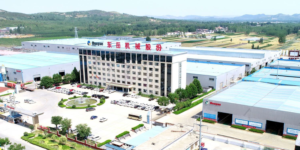— AAC Carbon Emissions
Based on a life-cycle analysis, the majority of emissions – around 74% – come from the manufacture of cement and lime. Around 13% of emissions come from the manufacture of AAC itself.
Based on a life-cycle analysis (LCA), the majority of CO2e emissions come not from the manufacture of AAC itself, but from the manufacture of two key raw materials – cement and lime. Together, cement and lime account for approximately 74% of the life-cycle emissions of a typical AAC product.
These emissions lie upstream with the cement and lime producers and are an unavoidable result of the chemical reaction that occurs when carbon is removed from limestone to produce clinker, the main ingredient in cement. The CO2 released in this reaction makes the decarbonisation of cement and lime challenging, though not unsolvable.
Emissions from the production of AAC in factories account for approximately 13% of life-cycle emissions, which are significantly lower than those associated with cement and lime. The main source of these production emissions are fossil fuels such as coal and natural gas that are used to power the boilers that provide steam to the autoclaves. Emissions from electricity generated to power ball mills, offices, warehouses and other facilities amount to approximately 3%.
The remaining emissions lie with other companies in the value chain for activities that include transportation of raw materials and distribution of the AAC product to the construction site (around 3%), emissions that occur on the construction site (2%) and the end-of-life disposal of AAC to the landfill (5%).
The LCA is based on an Environmental Product Declaration (EPD) independently verified by the Institut Bauen und Umwelt (IBU) using data sourced from a representative AAC factory in 2020. The LCA covers the full cradle-to-grave emissions, from the production of the raw materials and manufacture of the AAC product, to transport, building site construction and the use stage of the completed building, through to end-of-life demolition, waste processing and disposal.
The LCA shows that the cradle-to-grave GWP (Global Warming Potential) impact of 1m3 of AAC manufactured in the reference plant with a bulk density of 388 kg/m3 is 104 kg CO2e. This includes recarbonation, a process in which all cement and lime-based products naturally absorb CO2 from the atmosphere during their lifespan, acting as permanent carbon sinks during the use phase of a building and when it is pulled down and recycled. Recarbonation of concrete is a well-established science and recognised by the IPCC in its Sixth Assessment Report as an important carbon emissions sink.
As indicated in the EPD, AAC products can absorb 77 kg of CO2 per m3, with 80% of recarbonation achieved after 50 years and 95% within 80 years1.
The diagram provides an overview of the main sources of emissions for AAC. As recarbonation removes emissions, it is not included in the graph and the GWP impact has been adjusted to include the gross emissions impact without it.
Do you want to become a member of EAACA? Contact us!
News

We welcome a new Member – Dongyue Machinery Group
We are pleased to announce that Dongyue Machinery Co, Ltd. has recently joined the association and supports us in our work. Dongyue Machinery Co., Ltd.

Election Piotr Dauksza
At a recent meeting of the Executive Committee of the European Autoclaved Aerated Concrete Association (EAACA), the Committee unanimously elected Mr Piotr Dauksza as the

EAACA statement on the current RAAC topic in the UK
Following various media reports on the subject of RAAC in the UK, we as a European association would like to comment on this. Please find
